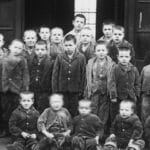Delia Jones’s Struggle: Exploring Themes of Abuse and Resilience
Zora Neale Hurston’s “Sweat” plunges readers into the harsh realities of the early 20th-century South, exploring themes of domestic abuse, resilience, and the struggle for liberation through the life of Delia Jones. Delia, a washerwoman in rural Florida, toils tirelessly, her “sweat” symbolizing not only her physical labor but also the emotional and psychological toll of enduring an abusive marriage to Sykes, her cruel and manipulative husband. This story isn’t just a historical account; it’s a timeless exploration of the human spirit’s capacity to endure even under the most oppressive circumstances.
The Venomous Nature of Abuse
Sykes’s cruelty permeates every aspect of Delia’s existence. He flaunts his infidelity, squanders her hard-earned money, and employs psychological torment to maintain control. The introduction of the rattlesnake into their home adds a chilling layer of menace, symbolizing Sykes’s venomous nature and the constant threat of violence that hangs over Delia. Some scholars suggest that the snake also represents the toxic masculinity prevalent during that era, where men like Sykes asserted dominance through fear and intimidation. This act of bringing a deadly animal into the shared home may suggest Sykes feels threatened by Delia’s financial independence as a washerwoman, which potentially undermines his perceived masculine authority within their relationship.
Delia’s Quiet Strength and the Seeds of Resistance
Despite the relentless abuse, Delia exhibits remarkable resilience. Her unwavering faith, her dedication to her work, and her inherent dignity serve as sources of strength. She doesn’t retaliate with violence, but her quiet resistance, her refusal to be completely broken, speaks volumes. This subtle strength may stem from her internalization of religious beliefs or perhaps from an intuitive understanding of her own self-worth, which Sykes cannot diminish. While scholarship continues to dissect the nuances of Hurston’s work, Delia’s character arguably stands as a testament to the power of the human spirit to endure even in the face of seemingly insurmountable odds.
The Weight of Societal Structures and Delia’s Pursuit of Liberation
“Sweat” also exposes the societal constraints placed upon Black women during the Jim Crow era. Delia’s financial independence, while a source of pride, also becomes a point of contention, challenging traditional gender roles. Sykes, threatened by her autonomy, likely resorts to violence and control to reassert his dominance. The story hints at the limited options available to women in abusive relationships during this time, highlighting the systemic inequalities that perpetuated such cycles of violence. Delia, in her own silent way, challenges these oppressive forces by refusing to be totally defined by her circumstances.
Unpacking the Symbolism: Beyond the Surface
Hurston masterfully uses symbolism to enrich the narrative and deepen its meaning. The white clothes Delia meticulously washes, mentioned repeatedly throughout the story, likely symbolize her purity, her relentless labor, and her moral fortitude, standing in stark contrast to Sykes’s darkness and moral decay. Some experts believe the white clothes also represent Delia’s vulnerability, making her a target in a racially charged society that often overlooked the suffering of Black women. The rattlesnake, as previously discussed, embodies Sykes’s menacing presence and foreshadows the impending danger. Further research into the cultural and historical context of the story may reveal additional layers of meaning embedded within these symbols, further illuminating Hurston’s powerful narrative.
The Ironic Twist of Fate: Exploring the Ending
The story’s climax, where Sykes is killed by the very snake he intended to use against Delia, is rife with irony and has sparked much debate. Was it divine retribution? A tragic accident with ironic consequences? Or perhaps a manifestation of Delia’s subconscious desire for liberation? Hurston leaves the ending open to interpretation, prompting readers to grapple with complex questions about justice, morality, and the intricate nature of human relationships. Some may argue that Delia’s inaction in saving Sykes is an act of self-preservation, a final reclaiming of her own life after years of being trapped in a cycle of abuse. This ambiguity contributes to the story’s enduring power and invites readers to examine their own perspectives on responsibility, justice, and the difficult choices individuals make when pushed to their limits.
The Moral Landscape of “Sweat”: Lessons in Resilience and Resistance
“Sweat” offers a complex exploration of moral themes. It delves into the devastating impact of domestic abuse, highlighting not just the physical violence but also the insidious psychological manipulation that traps victims in cycles of fear and control. While the story doesn’t offer easy answers, it illuminates the resilience of the human spirit and the potential for hope even in the darkest of circumstances. Delia’s perseverance suggests that even under the weight of oppression, individuals can find strength within themselves, in their faith, and in their unwavering determination to survive. The story also prompts readers to consider the societal structures that enable abuse and the importance of challenging these systems to create a more just and equitable world. To further enhance your understanding of American literature, you might enjoy exploring Mark Twain’s humorous short story, “The Jumping Frog of Calaveras County.” the jumping frog of calaveras county
Delia’s Final Act: The Complexity of Inaction
Delia’s choice to not intervene as Sykes lies dying is a powerful moment, laden with ambiguity. While some might interpret it as an act of revenge, it’s more likely a complex reaction born from years of suffering. Her inaction can be seen as an act of self-preservation, a prioritization of her own safety and well-being after years of being terrorized. It’s also possible to view her response through the lens of karma, where Sykes reaps the consequences of his own cruelty. Seeking shelter under the chinaberry tree, often associated with strength and resilience in the story, further reinforces Delia’s reclaiming of her own space and her liberation from Sykes’s oppressive presence. The brilliance of Hurston’s writing lies in its ability to evoke such a range of interpretations, prompting critical reflection on the complexities of justice, morality, and the nuances of human behavior.
Key Points of “Sweat” by Zora Neale Hurston
- Hard Work and Exploitation: Delia’s endless labor as a washerwoman represents the undervalued and invisible labor performed by women, particularly Black women.
- Domestic Abuse: Sykes’s cruelty, including using a rattlesnake to terrorize Delia, highlights domestic violence’s prevalence and lasting impact.
- Resilience and Resistance: Delia’s quiet dignity and strength showcase her determination to survive and resist oppression.
- Gender and Power Dynamics: Delia’s financial independence challenges traditional gender roles, while Sykes’s toxic masculinity asserts dominance.
- Justice and Revenge: The ambiguous ending questions the nature of justice and the lengths victims will go to for self-preservation.













2 thoughts on “Zora Neale Hurston’s Sweat: A Critical Analysis of Themes, Symbolism, and Character”
Comments are closed.